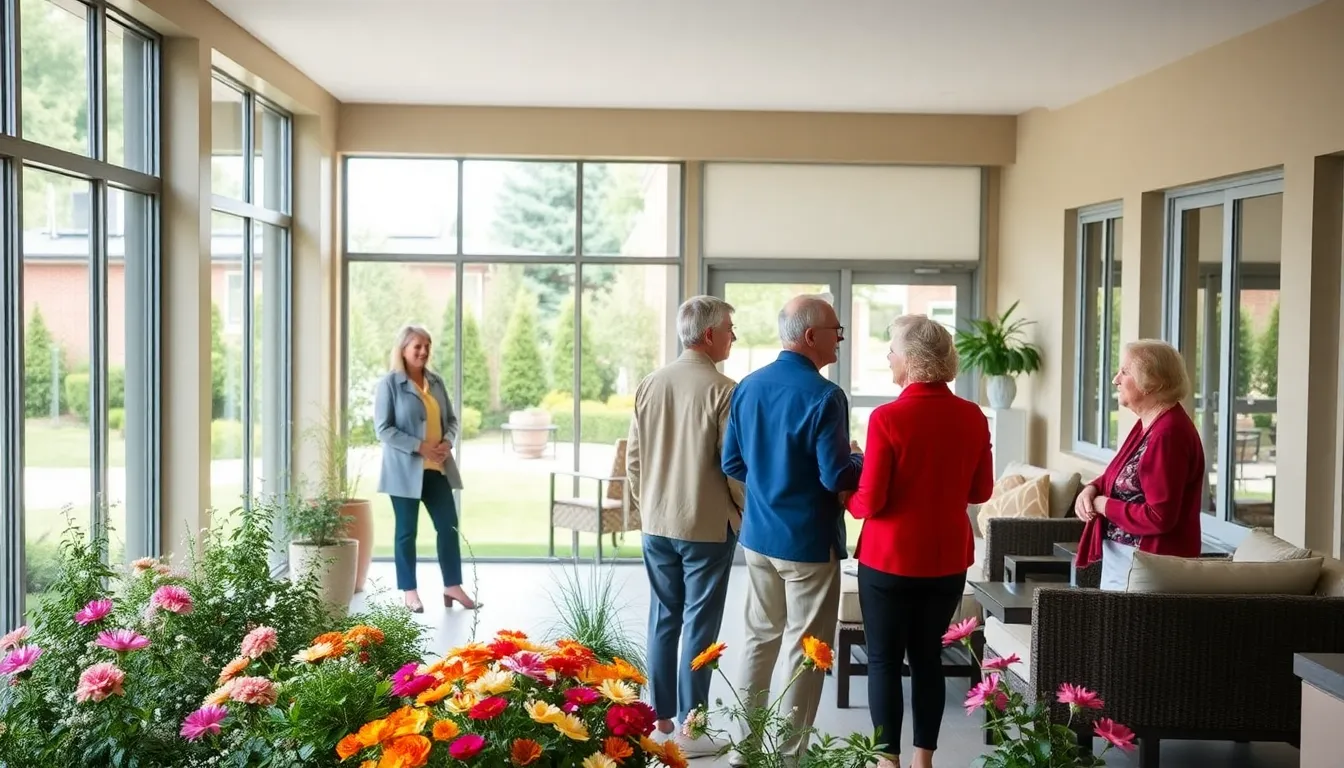Imagine waking up every day in a beautiful, serene environment designed just for you. Sounds dreamy, right? But here’s the catch: buying a retirement home can be as tricky as teaching your cat to fetch. Fortunately, it doesn’t have to be. This guide will walk you through everything you need to know about finding the perfect retirement home for sale. So grab a cup of coffee, sit back, and let’s explore this exciting phase of life together.
Table of Contents
ToggleUnderstanding Retirement Homes

Retirement homes are more than just buildings. They are communities where individuals can enjoy their golden years while receiving support and social interaction. Usually tailored for seniors, these homes provide a mix of independence and assistance as needed. They cater to various lifestyles, offering everything from a vibrant social life to serene privacy. Understanding these nuances is vital to making an well-informed choice about a retirement home for sale.
Types of Retirement Homes
Not all retirement homes are created equal. There are numerous options available, each with distinct features.
Independent Living Facilities
These allow for maximum freedom. Residents often have their private apartments and engage in various activities aimed at maintaining an active lifestyle.
Assisted Living Facilities
These offer more support for tasks like medication management and meals. It’s a great option for those who want a helping hand without losing their independence.
Continuing Care Retirement Communities (CCRCs)
CCRCs combine various living arrangements in one location. Residents can transition from independent living to assisted living as their needs change, ensuring they won’t have to uproot.
Nursing Homes
For those needing extensive medical care, nursing homes provide skilled nursing support. They are ideal for seniors who require constant medical attention.
Each type has its own set of benefits and services, so understanding the differences is crucial.
Key Considerations When Buying a Retirement Home
When looking for a retirement home for sale, considering several critical factors can ease the decision-making process. First, assess your lifestyle needs. Do you crave daily activities, or would you prefer a quieter environment? Think about your social needs as well: some communities thrive on interaction, while others focus on privacy.
Next, check the location. Proximity to family, friends, and healthcare facilities enhances the living experience. Also, don’t overlook accessibility features. As mobility becomes an issue, having ramps, elevators, or handicapped accessible units can make all the difference.
Finally, visit the community. There’s no substitute for an in-person experience. Speaking with current residents can provide invaluable insight.
Financial Aspects of Purchasing a Retirement Home
Investing in a retirement home involves various financial considerations. First, potential buyers should be aware of the total costs involved, which often include not just the purchase price but also monthly fees covering amenities, maintenance, and staff services.
Upfront Costs
Many retirement communities require a substantial entrance fee. This fee may range from a few thousand to hundreds of thousands, depending on the community and level of care.
Ongoing Expenses
Monthly fees can also add up quickly. It’s essential to know what these cover. Some might include meal plans and social activities, while others might not.
Financing Options
While a significant portion of seniors might pay through savings or the sale of their homes, exploring available financing options can help ease the burden. Long-term care insurance may also cover some costs. It’s wise to consult a financial advisor for tailored advice.
Benefits of Living in a Retirement Community
Living in a retirement community offers myriad advantages. One of the most significant benefits is the social environment. With planned activities, residents often find new friendships and opportunities for engagement.
Health benefits also arise from a supportive community atmosphere. Many homes offer exercise classes and wellness programs that foster physical activity and mental well-being.
Also, residents can enjoy peace of mind knowing assistance is readily available. Many communities are equipped to respond to medical emergencies swiftly. With maintenance and chores taken care of, residents can focus on what truly matters: enjoying life.
How to Choose the Right Retirement Home
Choosing the perfect retirement home can feel daunting. First, list your priorities. This could include location, cost, level of care, and community ambiance. Once you have a clear idea of what you want, start exploring options.
Research
Use online resources and reviews to narrow down potential candidates. Consider scheduling visits to get a feel for each community’s atmosphere.
Ask Questions
When visiting, don’t hesitate to ask specific questions about daily activities, healthcare availability, and what residents love most about the community. This qualitative data is just as vital as statistics.
Trust Your Instincts
Above all, trust your gut. If a place feels right, it likely is. Moving can be stressful, but finding a retirement home where one feels at ease can lead to fulfilling new beginnings.






